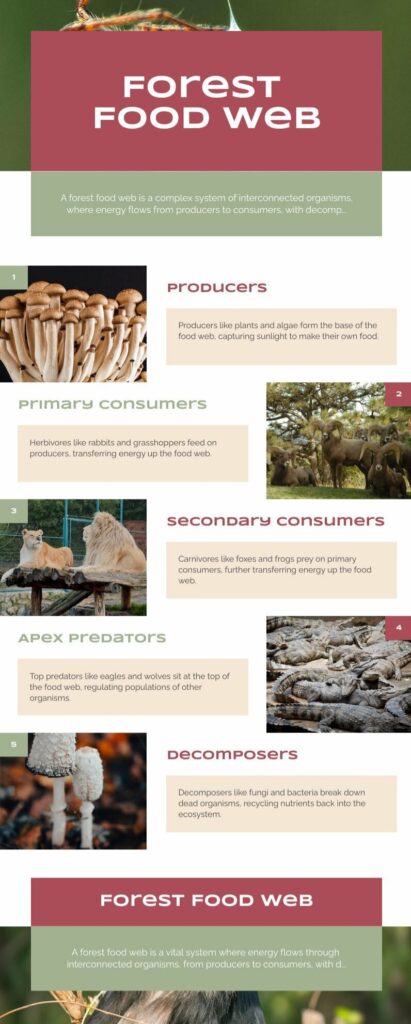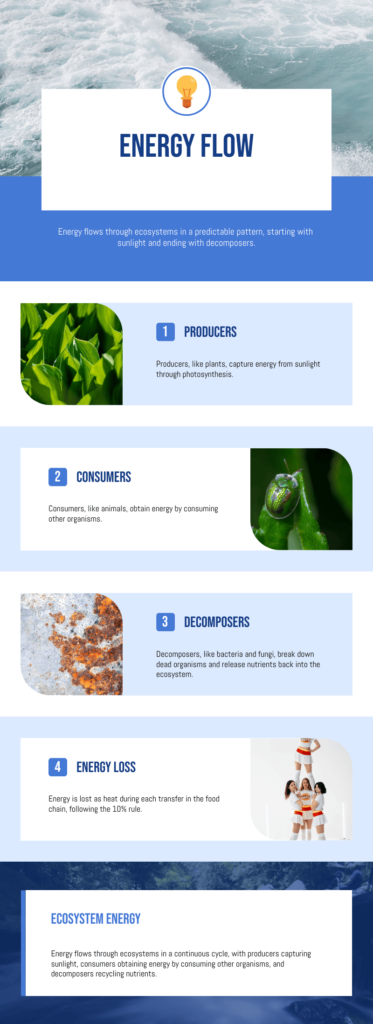The structure and function of ecosystem determine how life thrives and sustains itself in nature.
An ecosystem is a fundamental natural unit where living organisms interact with one another and their surrounding environment.
It consists of both biotic (living) and abiotic (non-living) elements that work in harmony to support life.
Gaining an understanding of ecosystem structure and function is essential for biology students, as it sheds light on ecological processes, energy transfer, and nutrient cycling, all of which contribute to environmental stability.
This article delves into the structure and functions of ecosystems, covering their components, energy transfer, nutrient cycles, ecological pyramids, food chains, and the role humans play in influencing ecological balance.

structure and function of ecosystem:
Structure of Ecosystem
The structure of an ecosystem is determined by the arrangement and organization of its living and non-living elements.
These can be broadly categorized into two main components:
Biotic Components
Biotic components include all living organisms in an ecosystem, further classified based on their roles:
Producers (Autotrophs)
Producers generate their own food using sunlight or chemical energy, forming the foundation of the food chain.
They provide energy for all other organisms.
Examples: Green plants, algae, and photosynthetic bacteria.
Function:
Convert solar energy into chemical energy through photosynthesis.
Consumers (Heterotrophs)
Consumers rely on other organisms for sustenance and are classified based on their dietary habits:
Primary Consumers (Herbivores):
Feed directly on producers.
Examples: Deer, rabbits, grasshoppers.
Secondary Consumers (Carnivores):
Prey on herbivores.
Examples: Frogs, small birds, snakes.
Tertiary Consumers (Top Carnivores):
Consume secondary consumers.
Examples: Lions, eagles, sharks.
Omnivores:
Consume both plant and animal matter.
Examples: Humans, bears, crows.
Decomposers (Saprotrophs)
Decomposers break down dead organic matter, recycling nutrients back into the environment.
Examples: Bacteria, fungi.
Function:
Convert complex organic materials into simpler inorganic compounds, making them available for producers.
Abiotic Components
Abiotic components include non-living physical and chemical factors that shape the ecosystem and determine which organisms can thrive within it.
Climatic Factors
Temperature: Influences the metabolic activity of organisms.
Light: Essential for plant photosynthesis.
Water: Crucial for all biological processes.
Wind: Affects seed dispersal and evaporation rates.
Edaphic (Soil) Factors
Soil texture and composition: Determines water retention and nutrient supply.
pH levels: Influences plant growth.
Mineral content: Provides essential nutrients for plants.
Chemical Factors
Oxygen and Carbon Dioxide: Critical for respiration and photosynthesis.
Nutrients: Elements like nitrogen, phosphorus, and potassium support plant growth.
Function of an Ecosystem
The function of an ecosystem encompasses various ecological processes that maintain environmental balance and support life.
These include energy transfer, nutrient cycling, food interactions, and ecological succession.

Energy Flow in an Ecosystem
Energy flows through an ecosystem in a one-way direction, starting from the sun, passing through producers, and moving across different trophic levels.
Trophic Levels
Organisms occupy different levels in the energy transfer system
First Trophic Level: Producers (plants, algae).
Second Trophic Level: Primary consumers (herbivores).
Third Trophic Level: Secondary consumers (carnivores).
Fourth Trophic Level: Tertiary consumers (top predators).
Energy Transfer and Loss
Only 10% of energy is passed from one trophic level to the next.
The remaining 90% is lost as heat due to metabolic activities.
Biogeochemical Cycles (Nutrient Cycling)
Nutrients move continuously between organisms and their surroundings through biogeochemical cycles.
Carbon Cycle
Carbon dioxide (CO₂) is absorbed by plants during photosynthesis.
Respiration and decomposition release CO₂ back into the atmosphere.
Nitrogen Cycle
Converts atmospheric nitrogen into forms usable by plants.
Involves key processes like nitrogen fixation, nitrification, and denitrification.
Water Cycle
Comprises evaporation, condensation, and precipitation.
Ensures water availability for organisms.
Food Chain and Food Web
Food Chain
A linear sequence depicting how energy flows between organisms.
Example:Grass → Grasshopper → Frog → Snake → Hawk
Food Web
A more intricate network of interconnected food chains that enhances ecosystem stability.
Ecological Pyramids
Ecological pyramids visually represent the trophic structure of ecosystems:
Pyramid of Numbers: Shows population size at each trophic level.
Pyramid of Biomass: Displays the total mass of organisms at each level.
Pyramid of Energy: Illustrates the amount of energy available at different levels.
Ecological Succession
The gradual transformation of ecosystems over time.
Primary Succession: Occurs in barren areas (e.g., volcanic regions).
Secondary Succession: Takes place in previously inhabited areas after disturbances (e.g., forest fires).
Human Impact on Ecosystems
Human activities have profoundly affected ecosystems in various ways.
Deforestation: Causes habitat destruction, climate change, and biodiversity loss.
Pollution: Air, water, and soil pollution disturb ecological equilibrium.
Climate Change: Alters species distribution and disrupts weather patterns.
Conservation Efforts:
Afforestation and Reforestation: Restoring lost green cover.
Wildlife Protection Laws: Implementing regulations to safeguard species.
Sustainable Resource Management: Promoting responsible use of natural resources.
Conclusion
An ecosystem is a self-sustaining unit where living and non-living elements interact to maintain ecological stability.
Its structure includes producers, consumers, decomposers, and abiotic factors, while its functions involve energy transfer, nutrient recycling, food relationships, and ecological succession.
By understanding these processes, we can appreciate the delicate balance of nature and recognize the significance of conservation in preserving biodiversity.
Protecting ecosystems ensures a sustainable environment for future generations.
“Want to revise Biology faster for NEET preparation?
🧠⚡ Visit our Shop now! 🛒📖
Frequently Asked Questions (FAQs):
What are the main components of an ecosystem?
An ecosystem consists of biotic components (living organisms such as producers, consumers, and decomposers) and abiotic components (non-living factors like temperature, water, soil, and nutrients).
How does energy flow in an ecosystem?
Energy flows in a one-way direction from the sun to producers (plants) and then through various trophic levels (herbivores → carnivores → top predators). Only 10% of energy is transferred to the next level, while the rest is lost as heat.
What is the difference between a food chain and a food web?
A food chain is a linear sequence showing energy transfer between organisms (e.g., Grass → Grasshopper → Frog → Snake → Hawk). A food web is a complex network of interconnected food chains, making ecosystems more stable.
What are biogeochemical cycles, and why are they important?
Biogeochemical cycles (e.g., carbon, nitrogen, and water cycles) help recycle essential nutrients between living organisms and the environment. They ensure a continuous supply of elements necessary for life.
How do human activities impact ecosystems?
Human activities like deforestation, pollution, and climate change disrupt ecosystems, leading to habitat loss and biodiversity decline. Conservation efforts such as reforestation and sustainable resource management help restore ecological balance.
